In our daily work, we often tend to focus on what is not going well. However, there is a simple yet effective method for changing our focus and bringing about positive long-term change: regularly ask yourself (and others) “What went well and why?”
This question consciously draws your attention to successes and at the same time helps you to understand what causes led to these positive moments.
Scientifically proven:
The effect of this method has been scientifically proven. In a study by Martin Seligman and colleagues (2005), participants performed the “Three Good Things in Life” exercise for a week. Each evening, they wrote down three things that went well that day and explained why these events occurred.
The result:
After just one month, the participants reported significantly increased life satisfaction and fewer depressive symptoms. These effects also lasted for three and six months. The study shows that consciously reflecting on positive events not only strengthens individual well-being, but also has the potential to promote resilience in the team and a better working atmosphere.
How you can apply “What went well and why?” in your daily work
Asking “What went well and why?” is not only a powerful tool for personal development, but also an effective leadership technique for motivating teams and creating a positive feedback culture. Here are some specific examples of how to use this method:
- In team meetings: At the end of a project or an intensive work phase, you can ask your team: “What went well in this project and why?” This focuses attention on successes and also helps identify success factors that can be used in future projects.
- In feedback discussions: Instead of focusing exclusively on potential improvements, ask your employees: “What worked well and why?” This fosters a culture of recognition and motivates employees to become more involved.
- In personal retrospect: Take a moment at the end of the workday to ask yourself, “What went well for me today, and why?” This daily exercise strengthens awareness of one’s own strengths and promotes a solution-oriented attitude in the long term.
Why this method works
Open-ended questions such as “What went well and why?” fulfill several central needs of your employees: they strengthen autonomy by offering space for individual reflection and promote a sense of competence and social inclusion. By reflecting on successes together, teams not only create a positive working atmosphere, but also promote long-term commitment and motivation.
Conclusion: lasting positive change
By regularly asking the question “What went well and why?”, you shift the focus in your team from problems to solutions and success factors. This small change in communication style can contribute to a sustainably positive team culture in the long term. The effort is minimal, but the effect is enormous.
Would you like to learn more?
In all our training and consulting services, we place particular emphasis on integrating scientifically sound and practice-oriented impulses. We adapt these individually to the needs of our customers. The connection between science and practice is crucial for us because evidence-based approaches not only enrich our own daily work, but also bring you tangible and sustainable success.
Contact us now and find out how we can work together to develop customized solutions that will bring about major changes in your organization through small but well-founded steps.



